A while ago, the topic of “Li Yanhong riding a five-ring on a driverless vehicle†instantly occupied the headlines of major media. First of all, I wouldn't say that the reversal plot of traffic violations would not be said. It would be enough for the pilot to drive Baidu to “fire†again.

No wonder companies are throwing their heads. Nowadays, talking about artificial intelligence is particularly relevant to the automotive industry. It doesn't sound like you're out driving. On the contrary, as long as it is accompanied by this technology, it will immediately appear tall, full of science and technology style, who let people is the "popular niche" in the digital era! Even the box office's "Speed ​​and Passion 8" also made it an important attraction.
As a future travel trend, drones carry many technological dreams of consumers and car manufacturers. Although there is still a long way to go, it is exciting and focused in the digital development process. In addition to Baidu, we also saw Mercedes-Benz, Ford and other car companies as well as parts giant Bosch, China and other companies driving test vehicles have been on the road.
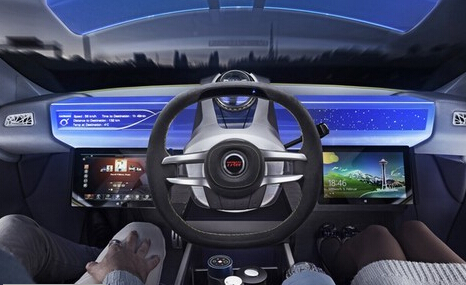
Not only that, Audi recently released news that its first production vehicle with unmanned technology will be launched in 2017, while Volvo, Ford, and BMW externally claim to launch a fully self-driving car in 2021 and make it on the road... This means that driverlessness will no longer be idealized or conceptualized, but will soon become a reality and enter the public life.
However, when the original "Cool" show really entered the "actual battle", many challenges accompany it, and the transmission and processing of big data is one of the most important issues to be solved. Big data analyst, Mark van Rijmenam, founder of BigData-Startups.com, once said that if a driverless car generates 1GB of data per second (equivalent to sending 200,000 text-only electronic messages per second E-mail or upload 100 high-definition digital photos on a computer, then the amount of data generated each year will reach about 2PB (terabytes). It is understood that Rigi Menem achieved this conclusion based on 600 hours (216 million seconds) per vehicle per year. Perhaps the amount of data generated by unmanned vehicles in the future is not limited to this.
Therefore, how to ensure the efficient transmission of such a large amount of data will become a major problem for car companies. Under the assumption that if there is a broken circuit in one of the parts, or it is shielded, or the network response is too slow, the driverless car will be stuck. How can this be solved? At this time, you can't go to restart like a computer card, or repair it after a failure. After all, vehicle driving is related to personal safety.
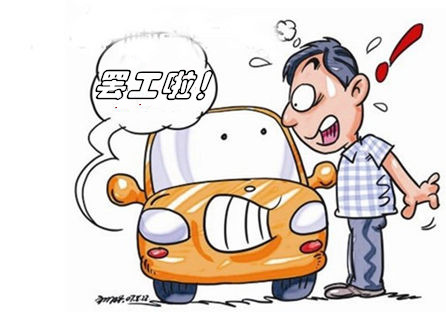
Reliable data transmission is a mandatory requirement
At present, whether it is automatic driving or unmanned driving, big data generation and high-speed transmission applications are mainly presented in the following aspects:
1. In-vehicle infotainment system (IVI); As consumption upgrades and demand diversify, we see that the display screens presented by IVI have increased and the number has increased, and the contents and functions involved have been more and more detailed. Such as 3D navigation, assisted driving, fault detection, vehicle information, body control, mobile office, wireless communication, vehicle interconnection, online-based entertainment functions and TSP services and a series of applications.
All applications bring unprecedented sensory enjoyment and information needs to the occupants, but also bring huge amounts of data. Once data transmission problems occur, it is probably worse than the annoyance in the use of mobile phones and computers.
2. Advanced Driver Assistance System (ADAS); The development of intelligent cars, such as adaptive cruise systems, lane departure warning systems, automatic parking, and automatic emergency brakes, have continued to expand. With the further development of technology, the amount of information collected by basic sensors, cameras, and radars will also increase, and the number of other body sensors will increase. All of these are related to the safety of vehicle driving, and data transfer is not sloppy.
In this aspect of transmission, the existing CAN bus has been difficult to meet the demand. At present, many companies focus on low-cost, lightweight and efficient Ethernet technology.
3, car networking; now more people will be called the driverless car "Intelligent Network" car. In addition to intelligence, it also involves reliable over-the-air (OTA) data flow for vehicle-to-background (V2B), vehicle-to-vehicle (V2V), vehicle-to-infrastructure (V2I), vehicle-to-user (V2U), and/or satellite communications. Focus on achieving the networking features of the car. Without a certain amount of throughput and an efficient transmission scheme, the driverless driver can only stop at the L2 stage, not to mention safety.
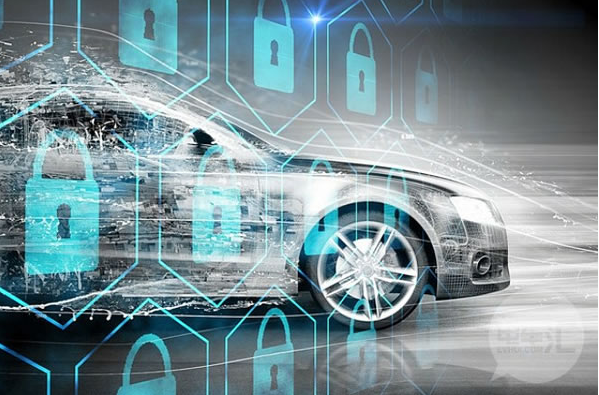
From the above point of view, whether it is a more complex man-machine interface, or an increasing number of sensor systems, or the future of the car all, these will double the number of high-speed data nodes. According to industry estimates, data rates will far exceed 12 Gbps in 2020.
For driverless cars, safety is the bottom line and the most important vision. Any node in the transmission process has problems or transmission delays, and the consequences are unimaginable. Therefore, reliable data transmission is a mandatory requirement for unmanned vehicles, and the implementation of this standard and requirements requires a reliable car connection system as a support.
Driverless connection solution
In recent years, with the increasing use of automotive electronic products, the number of automotive connector applications has increased. It is estimated that 600 to 1,000 electronic connectors are expected to be used in each car. At present, the global automotive connector accounts for about 15% of the connector industry. With the rapid development of intelligent network-linked vehicles, it is expected to occupy a greater proportion in the future. However, as mentioned above, with the advent of unmanned driving, in addition to meeting the conditions of high temperature and seismic resistance in harsh environments, the connector must continue to adapt to more complex network architecture designs to meet the conditions of big data. Efficient transmission requirements. Equivalent to inject more energy into this small component, and for the supplier, another extreme challenge is in front.
However, some companies have begun to challenge and try in this area, and have made corresponding progress. According to the source of big data and transmission application scenarios, TE Connectivity (TE), an industry-leading connectivity solution provider, also classifies the application of high-speed high-frequency signals on the smart networked cars into three categories: infotainment links, Ethernet links And security links; and around this development of the corresponding product line.
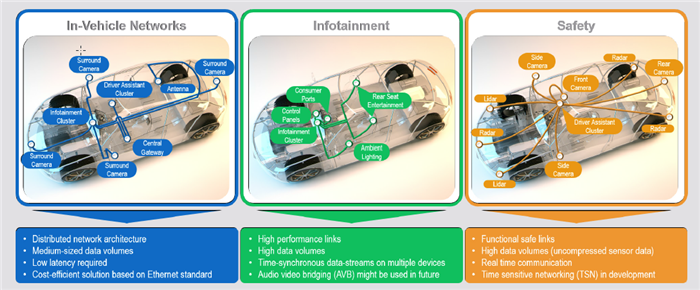
The following are some of the techniques reviewed by the reporter for reference by the industry:
HSD connector platform: In order to meet the requirements of continuously increasing display and resolution accuracy of the car entertainment system, TE has developed the HSD series of products. It is understood that under the proprietary data transmission protocol, HSD can achieve 3Gbps data transmission rate. According to the relevant person in charge, by using the next-generation transmission protocol, it can quickly reach 6Gbps speed.
Optical signal connector platform: This product is also developed specifically to meet the connection needs of infotainment systems and meets the requirements of the MOST specification. It uses plastic optical fiber (POF) as the physical layer and runs data at up to 150 Mbps.
HSL interface: Now the mobile phone has shouted the slogan of “recharging for two minutes and talking for two hoursâ€, so the upgrading of the USB charging port of the car is imperative. TE's HSL products have been able to meet the USB2.0 480MB/sec transfer rate, and more importantly, they can support high-current charging of 2.5A. TE said that the future USB Type-C will become the main trend of development, is currently developing this product, when the charging power will reach 100 watts, that is, not just mobile phones, computer charging will be completed successfully.
NanoMQS Connector: Designed to meet the needs of automotive Ethernet data transmission, this product provides a solution for differential pair data transmission and enables the use of rugged automotive-grade terminals to meet the needs of 100BASE-T1 Ethernet links. The advantage is that, while following the special application guidelines, it is possible to flexibly reuse and configure the standard connectors.
MATEnet modular and expandable connector platform: This product is also a key component of automotive Ethernet links with transmission rates up to 1 Gbps. It is understood that by using existing highly modulated data transmission technology, MATEnet connectors have the potential to operate at data rates up to 6 Gbps.
Both the NanoMQS connector and the MATEnet modular and expandable connector platform are used for the connection between the functional modules and the processor in the ADAS security system; the Fakra connector is used between the camera and the processor And MATE-AX connectors.
MATE-AX Connector: This is a next-generation compact coaxial connector designed for high speed, RF performance up to 9GHz and compact and efficient volume requirements. Its electrical performance meets connection and component level signal integrity and EMI requirements, and the rugged, compact design has different variants for different environmental conditions.
Antenna products such as WiFi/BT and 4G LTE: As the main product, TE's antenna ranks second in the consumer products industry. In the future, this advanced experience will be transplanted to the car to meet the transmission of big data in the car network. demand.
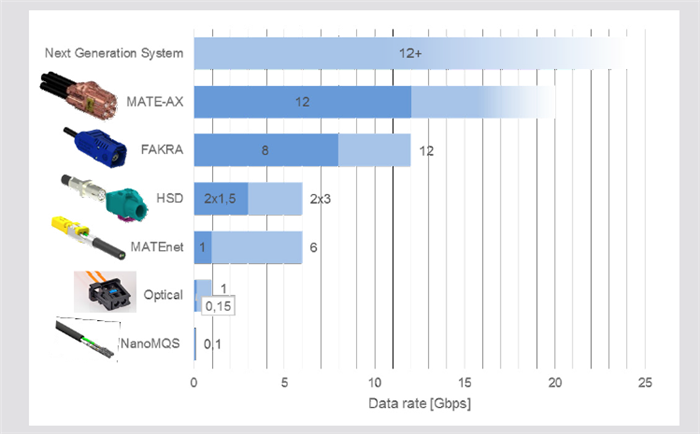
Multiple protection during transmission
If anything is not afraid of 10,000, you will be afraid of it. The environment facing the driverless driver is harsh, and once a connector has a problem with the connector, he or she will appear to be in a situation where he or she will be involved.
In response to this, the relevant person in charge of TE stated that, not to mention driving without driver, many customers have experienced problems of sudden failure of the connector under high vibration and high temperature on models that have already been mass-produced. Can't find it. This is because industrial and consumer products use single-contact connectors, and there is no alternative if problems occur. In response to this, TE uses a multi-touch technology, and the design is relatively complex. Every moment will ensure that there are several points on the terminal, and no instantaneous signal loss will occur.
In antenna products, the person in charge also stated that the requirements for automatic driving and anti-interference ability are very high, including the fact that the signal transmitted by itself does not affect other vehicles and is disturbed by other signals. As far as the connector product itself is concerned, its design has a shielding and anti-interference ability. The key issue at present is to reduce the impact on other external vehicles. This also applies to high voltage connectors.
To sum up, whether it is to meet the high-speed transmission HSD connector, or MATEnet connector, or antenna products, or multiple protection technology on the connection, you can see the current research and development for unmanned driving has infiltrated the details. In addition to car companies, suppliers, including TE, are also escorting their safety from each node, further confirming that this driving technology is not just fanaticism, but is becoming reality step by step.
The js series twin-shaft forced mixer equipped with this product is equipped with Zeyu multi-axis sealing technology and has stable performance. The stirring blade drives the stirring blade to force the stirring of the material in the tank body, the stirring effect is very strong, and the stirring quality is good.
Concrete Mixer Machine,Win Shaft Concrete Mixer Machine,Compulsory Concrete Mixer Machine,Js3000Twin Shaft Concrete Mixer Machine
Shandong Zeyu Heavy Industry Science and Technology Co.,Ltd. , https://www.zeyuconcretemachine.com